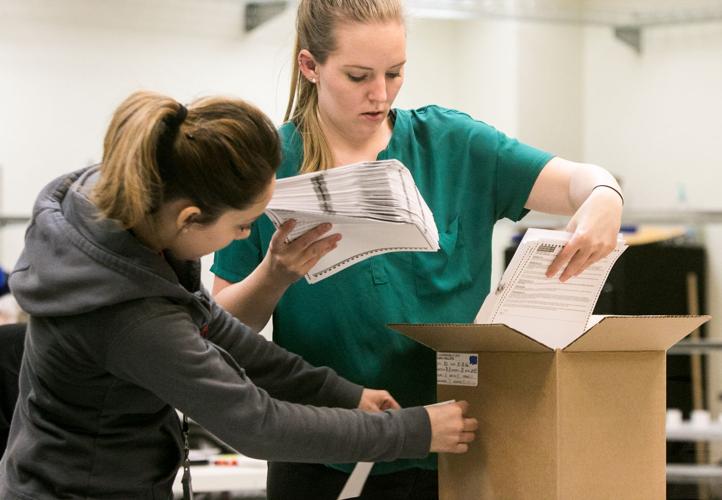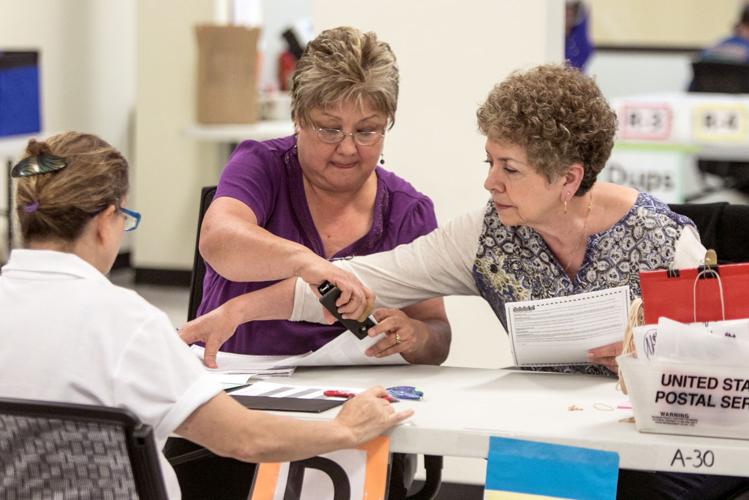PHOENIX — Backers of Proposition 123 have a couple of theories about why the results are so close, essentially 50-50 with ballots still being counted.
One theory involves Donald Trump and, to an extent, Bernie Sanders.
Glenn Hamer, president of the Arizona Chamber of Commerce, cited the unusual — and perhaps unprecedented — outpouring of support for the presumptive Republican nominee, a political outsider; and the momentum of Sanders, whose campaign for the Democratic nomination is based largely on attacking the status quo.
“It’s possible that people are a little bit more skeptical of anyone associated with the establishment,” Hamer said Wednesday.
That climate didn’t keep some high-profile Trump supporters, including former Gov. Jan Brewer and Maricopa County Sheriff Joe Arpaio, from backing the ballot measure, he noted.
But the negative attitude toward those in power — and that can include Gov. Doug Ducey, who was the chief drum-beater for Proposition 123 — had an effect, Hamer said.
“I do believe the political climate this year depressed the final vote,” he said.
Turnout in Tuesday’s Arizona special election was low, with Prop. 123 campaign manager J.P. Twist putting it in the 32 percent range.
“It’s a tough political year,” said Twist. “You’ve seen what’s been going on in the national politics. People are angry.”
Ducey called this year’s political cycle “chaotic.”
The question that remains is whether all this will end up as a post-election victory analysis or a post-mortem over the measure, which would funnel $3.5 billion into the state’s K-12 school system over 10 years as part of a lawsuit settlement.
As of Wednesday evening Prop. 123 was leading by just 7,649 out of more than 931,000 ballots already counted, or by a 50.4 percent to 49.6 percent margin.
There appear to be at least another 100,000 ballots still to be tallied.
In Pima County, election officials completed counting 8,500 early ballots but still had an estimated 1,300 conditional ballots left to tally. A majority of voters in Pima County were opposed to Prop. 123, with nearly 54 percent voting against the measure.
Backers of the measure pointed to other complications that made the pro-123 argument difficult.
There was the decision to put the issue before voters in a special election versus waiting until November. Ducey said that was intentional to try to get the dollars flowing into schools as soon as possible.
Twist said the people who tend to turn out for special elections are “high-propensity voters.”
“And the high-propensity voters are 65-plus, white folks in both parties for the most part,” he said. That, Twist said, was not good news.
“The Democrats in that group were saying, ‘No, no, no, this is the Legislature’s problem, this is just bailing them out of (Proposition) 301,’ ” he said, referring to a 2000 voter-approved measure that required lawmakers to boost state aid to schools annually to match inflation.
It was the failure of lawmakers to obey that law starting in 2010 that led to schools filing suit against the state, and to Ducey putting together the compromise deal with education officials that became Proposition 123. The deal would not fully fund what the schools lost in prior years, another issue cited by some “no” voters.
Republicans in the high-propensity voting group were equally skeptical, Twist said, though for different reasons, with questions about the promise that Prop. 123 would not raise taxes and that the money would go to teacher salaries.
In fact, right out of the gate in January, the polling showed just 50 percent of those questioned said they would vote for the measure, with 41 percent opposed and the balance undecided.
All that, said Twist, required a rethinking of the tactics and the focus on convincing those already likely to vote.
“We amped up our fundraising and put more into trying to drive turnout, trying to get the younger folks, parents, women and Democrats out to vote,” he said.
And then there was that Trump effect that had to be addressed.
“We were changing up our media strategy with the whole purpose of like, ‘Hey, we understand there are serious trust issues this year but don’t take your trust issues out on teachers and on schools,’” he said, promoting that message a lot through Twitter and Facebook, and through a special emphasis on women ages 28 to 45.
Political unrest aside, Hamer said the ballot measure had something else going against it: complexity.
On the surface, the sales point was the $3.5 billion in new dollars for schools over the next decade.
But $2.1 billion of that would come from the state land trust account already set aside for schools, above and beyond what are the normal withdrawals. It takes a constitutional amendment, in the form of Proposition 123, to alter that formula.
“It is complicated to explain what our state trust land is and how the distribution works,” Hamer said. “It required a very robust multifaceted campaign.”
Also an expensive one.
At last count, proponents had spent more than $5 million, with $190,000 of that coming from Hamer’s organization, the Arizona Chamber of Commerce.
But Hamer said one thing did finally cut in the proposition’s favor.
“It helped that the Legislature was out of session,” so that lawmakers and their high-profile battles were out of the daily news cycle, he said.
Sen. Steve Farley, a Tucson Democrat who voted for the measure, said the slight lead shows voters are distrustful of the governor and Republican-controlled Legislature.
“I don’t know of anybody who was enthusiastic about this,” Farley said. “Ultimately I voted yes because I felt that it was the only way we could get money into schools right away until we change the majority.”
Ducey, Proposition 123’s chief proponent, said he continues to believe the measure will pass in the end. But he rejected the idea that if it fails it reflects on him.
“This is an issue about school funding and the settlement of a lawsuit and how we spend dollars to support teachers and children,” the governor said. “It’s never been about me.”






